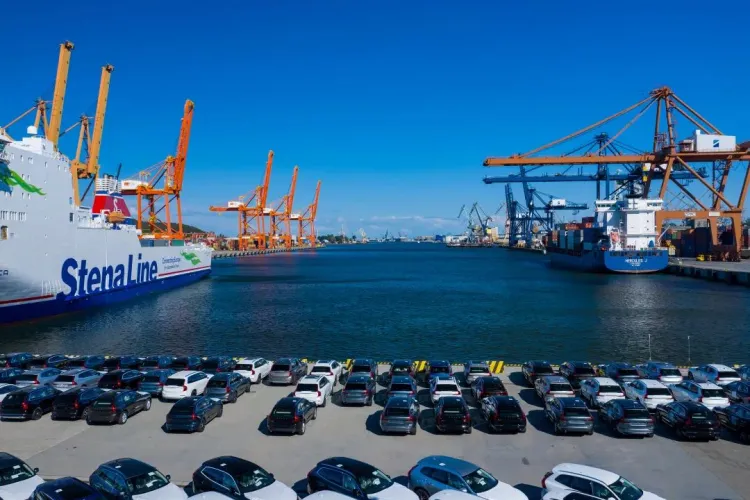This year, a number of new energy vehicle enterprises in China have increased overseas exports, overseas factories. China’s car brand ‘overseas’, is from the early single trade mode, the development of today’s overseas factories, joint ventures, technology ‘reverse output’ of the new stage.
2025, China’s auto exports continued last year’s strong growth characteristics. From January to February this year, China’s auto exports 911,000 units, an increase of 10.9 per cent year-on-year, of which 282,000 new energy vehicles exported, an increase of 54.5 per cent year-on-year. Not only exports, Chinese car companies overseas localisation plant is also speeding up, many car companies put forward ‘production capacity to the sea’ of the new plan.
Not long ago, Changan Automobile announced to enter Europe and other key overseas markets, and rapid layout of Southeast Asia, Central and South America, the Middle East, Africa and other markets. It is expected that in 2025, Changan Automobile will achieve 1 million units of sales in overseas markets. Lantu Automobile, a subsidiary of Dongfeng Group, said that in 2025, it will focus on the layout of the Middle East market on the basis of deep cultivation of the European market, so as to verify the global competitiveness of Chinese brands through the high-end market in the Middle East region.
How can China’s electric vehicle enterprises better ‘go out’, and what new features can there be in the future?
When it comes to increasing international cooperation, many Chinese car companies said that from the perspective of the future trend of the global automotive industry, ‘branding’, ‘technical’, ‘high-end’, ‘localisation’, ‘technology’.The four strategic directions of ‘localisation’ will provide new ideas for Chinese auto enterprises to break through the international competition pattern.
Lu Fang, CEO of Lantu Automobile: From ‘whole car’ going to sea to driving technology going to sea, forming technical cooperation and competitive advantages. From ‘trade going overseas’ to ‘ecological going overseas’, Chinese automobile enterprises will accelerate the layout and construction of factories overseas, build overseas ecology together, and reduce the risk of overseas compliance and the cost of development.
Christian Hockfield, Executive Director of the German transport transition think tank, highly appreciated China’s achievements in the field of electrification, and at the same time, he suggested that Chinese enterprises should reverse their layout in Europe and help the local supply chain and industry develop through joint ventures, so as to achieve the climate goals together.
Christian Hockfield, Executive Director of Agora, the German Think Tank for Mobility Transformation: Over the past 40 years, we have accelerated technological innovation and development in the Chinese market through joint ventures. Now that Chinese brands, suppliers and battery companies are going global, we can shift our co-operation model. In Europe and Germany, joint ventures based on European rules can help electrify local road transport and jointly promote technological innovation and industrial upgrading to better combat climate change.
In the blueprint of Chinese automobile enterprises ‘going out’, Southeast Asia is the most concentrated area, especially Thailand is the most prominent. Experts from the Electric Vehicle Association of Thailand (EVAT) said that thanks to China’s new energy vehicles, the Thai market is accelerating its transition to ‘new’.
Data show that over the past three years, Thailand’s EV penetration rate has jumped from less than 1% to 13%, 90% of which are from Chinese brands. However, despite the bright market performance, Thailand has also raised new expectations for deeper cooperation.
Chairman of the Electric Vehicle Association of Thailand (EVAT), Yusaporn Launur: We hope to strengthen cooperation at the supply chain level, while Chinese car companies set up production bases in Thailand, they will integrate Thailand’s local supply chain through joint ventures or collaborations, promote technological innovation and long-term cooperation, and pay attention to the training of talents and cooperation in battery technology.
In the past two years, nearly 10 Chinese car companies, including BYD and Changan, have invested and built factories in Thailand, which has also led to the establishment of a number of supporting enterprises. Experts pointed out that through the ‘technology – market – policy’ three-dimensional complementary, China and Thailand are building a complete industrial chain from R & D to manufacturing. Such a new mode of deep cooperation not only drives the development of Thailand’s local auto industry, but also allows Chinese car companies to take deeper roots in the Southeast Asian market.
Source: CCTV News Client

